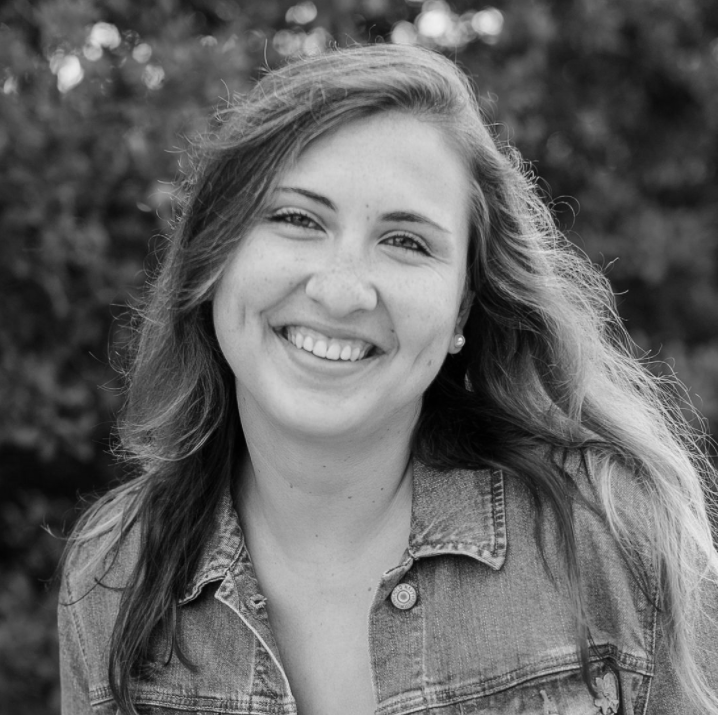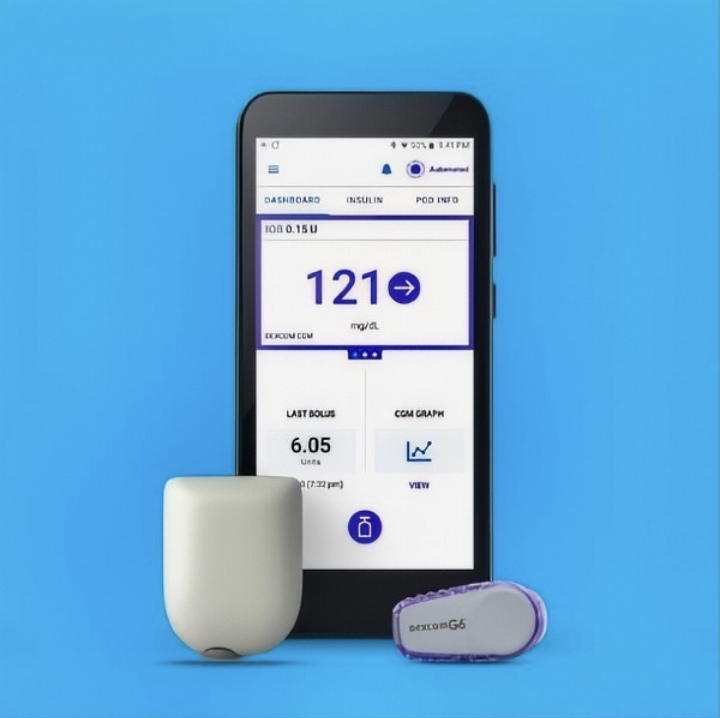How This Foodie Changed Her Diet After Being Diagnosed with Type 2 Diabetes
Written by: Erika Szumel
7 minute read
June 10, 2022
Chanel loves trying new foods and celebrating the classics. Here’s how she changed her diet to help manage her type 2 diabetes.
Editor’s note: This story is about a young woman who was able to stop taking insulin after making changes in her lifestyle habits—but that is not necessarily the case for everyone with type 2 diabetes. Some people with type 2 diabetes will need insulin therapy for the rest of their lives, and some people may be able to maintain personal blood sugar goals through other medications and/or changes in lifestyle habits. Talk to your healthcare team before making any changes in your diabetes management routine.
This interview has been edited and condensed for clarity.
Chanel Smith, 31, is a foodie living in the Los Angeles area. She loves trying new foods, celebrating the classics and sharing all her yummy finds on Instagram. Here’s how her diet and lifestyle changed when she was diagnosed with type 2 diabetes.
BT2: Hi Chanel, Thanks for chatting with us! When were you diagnosed with type 2 diabetes? What were some of the symptoms you experienced?
Chanel: I was diagnosed with type 2 diabetes in August of 2020—it was around my mom’s birthday weekend. I was very thirsty, had dry mouth and was constantly going to the restroom every 15 to 20 minutes. Little did I know—while I was celebrating my mom’s birthday—I was having all of these sugary drinks and greasy food, not understanding it was making things worse for my body. I was at work when I experienced a urinary tract infection (UTI), and that is when the dietician at my job recommended that I go to urgent care after work. When I went to urgent care, they took a urine sample. The next day I went to my normal doctor’s office to get my blood taken for more tests.
The following day, I was at home when I started to experience blurry vision and I was stumbling. That night my parents rushed me to the Kaiser Emergency room. The next thing I know, I woke up in the ICU with no memory of what happened. It was crazy because the doctor’s office called the next day to inform me to go straight to the emergency room because my A1C was 9%.
When I was in the hospital, they told me that my blood sugar was in the 600s, which is what they considered a “diabetic coma”. If my parents didn’t rush me to the emergency room at that moment, I probably wouldn’t be here sharing my story. I’m truly blessed and forever thankful to my parents.
What was your initial reaction when you were diagnosed?
When I woke up in the ICU alone, I was scared and extremely emotional. The doctor informed me that I was in diabetic ketoacideosis, and that I had type 2 diabetes. I was really emotional, my thoughts were all over the place because I never imagined that I would have diabetes. There were no signs for me or anyone in my family with the disease.
What was your doctor’s course of action? Did they prescribe you any medication?
The doctor’s plan was for me to meet with a nutritionist that would go over the proper foods to eat. They explained the plate method for what I should be eating and how much I should be eating. In addition to changing my diet, the doctor wanted me to exercise daily. At first, I was prescribed two different types of insulin, and metformin. I was told to check my blood sugar three times a day. However, after working hard for a month and a half, I was able to lose some weight, and stop taking the medication since I was managing my blood sugars through diet and exercise. I still prick my finger twice a day. I still get nervous when pricking my finger, so I do a little countdown in my head.
How does diabetes impact your day-to-day life? What changes did you make to your everyday life?
Diabetes affected my life in many ways, especially in my work environment and social life. I had to instill a stronger sense of self-discipline in myself. I realized that things were going to change. At work, I had to include my own “snack time” so I would keep my blood sugar levels steady while moving a lot at work. I learned how to count carbohydrates and how to read the nutrition facts on everything. Managing healthier portions of food was hard for me because I love food so much. My parents and I changed our meals at home, we included more salads, vegetables and less fried foods. I invested in an air fryer to use for my meals. I eat breakfast every single morning, when before I wasn’t a breakfast person at all. I had to make some big changes to my diet, like my Starbucks order, and that was a challenge for me. But thanks to some amazing Pinterest and Instagram pages, I was able to learn how to modify my drink order to something with fewer carbohydrates.
We love your food blog on Instagram! How has your relationship with food changed? What do you want people to know about type 2 diabetes and food?
First of all thank you very much, I really appreciate that. I was extremely happy about how I was going to blend my foodie page and diabetes together to adapt my life with diabetes. There are so many wonderful diabetes food pages that inspired me to embrace my diabetes. My relationship with food changed, but it changed for the better. Now, I love exploring healthier choices when dining out. I have an amazing relationship with food because of the changes I made. I know which foods and how much of them will spike my blood sugar. I came to realize almost two years later, I can eat what I want. I’m in control of my body. I want people to know that you shouldn’t be restricted because of diabetes. Diabetes is a disease we have to live with forever, but don’t let it control you. I don’t want people to feel like they can’t eat what everyone else eats like sweets, fried food, etc. You can learn how to manage the relationship between the two. It takes discipline. I feel it is the most challenging around the holidays because I just want to pig out on all the yummy food. But I know that is not the best decision for me, therefore I now eat small portions throughout the day.
Diabetes distress is common in the type 2 diabetes (T2D) community, especially because of the stigma that comes with the disease. What is one self-care act you like to do?
I didn’t understand how far-reaching diabetes distress is in the community until I joined the Healthline diabetes group. I interacted with so many wonderful people living with type 2. It opened my eyes. My favorite self-care act is actually every Sunday since I was diagnosed—I go to Trader Joe’s. After I was discharged from the hospital, that Sunday, Trader Joe’s was the first place I drove myself once my vision started to come back. Trader Joe’s has been my safe space on Sundays ever since. Even if I don’t purchase anything but fruit, it gives me peace of mind.
How do you like to incorporate exercise into your life?
I always take the stairs at work. I walk around my neighborhood park. When I was first diagnosed, I did this intense boot camp with a few friends. It was so hard but I pushed myself. It was a proud moment. I try to aim to walk a few days during the week. I’m not huge on exercising at the gym—I prefer going on walks instead.
What is something you wish you knew when you were first diagnosed?
I wish I knew there was an entire community out there for us. I wish I was told it would get easier eventually. In the beginning, it was a challenge to accept the fact that I had diabetes and all the obstacles it came with. I was scared when I had to give my own insulin shots in my stomach, that was really the hardest thing ever. I don’t wish that on anyone. Needles still scare me to this day. But there are so many people living their amazing lives with type 2. It has opened my eyes so much and I am proud to be a part of this community.
Do you have any words of inspiration for those who are newly diagnosed with type 2?
I would love to tell someone who is newly diagnosed that everything is going to be okay. Don’t let diabetes control your life, try to embrace it. Embrace it by making it your own. Find a group and make new friends that understand what you are going through. Find inspiration from the different social media groups, clothing merchandise and creative food recipes. Don’t be afraid of the term “diabetes”. Try to learn about diabetes through online classes and buy educational books on the disease. Don’t let anyone tell you what you can or can’t eat. You are in control of your life, don’t let diabetes defeat you or make you fearful.
Is there anything else you’d like to add?
A fun fact! During my college internship, I was the special events intern for the Los Angeles chapter of the American Diabetes Association. I was an intern for six months. It was the best experience I ever had. I never imagined that almost five years later I would have been diagnosed with type 2. I was a part of the planning for their annual walkathon, I would call people to donate to the cause by either volunteering, donating, or attending the walk.
Follow Chanel’s journey on Instagram.
YOU ARE NOT ALONE. JOIN THE BT2 COMMUNITY!
A place for everyone impacted by type 2 diabetes to share their stories, get connected to one another and find resources on topics from daily management to mental health. Now with the support of our friends at the American Diabetes Association, get instantly connected to other people who just get it—ask questions, share successes, vent about it in a safe and respectful platform designed specifically for people impacted by T2D. Here you’ll find a collection of practical ideas, stories and resources in both English and Spanish, for not only living with type 2 but thriving with it.
Were you recently diagnosed? Learn how to find the mental health support that you need here and how to find a mental health provider here.
Want to share your story with us? Share your story or contribute to our other content here.

Author
Erika Szumel
Erika has been living with type 1 Diabetes since 2000 and has strived to be an advocate for the diabetes community ever since. Every November she shares her thoughts and photos on living with type 1 diabetes (T1D) on Facebook to help raise awareness for the disease. Erika earned her BA in Visual & Sound Media at Seton Hall University in New Jersey and began her career as a TV producer. Living at the Jersey shore, Erika is a lover of the little things, the ocean and pork roll.
Related Resources

Managing type 2 diabetes with insulin can be challenging, but a new study shows the...
Read more

Editor’s Note: SGLT-2 inhibitors and GLP-1 receptor agonists are medicines approved by the FDA for...
Read more

The FDA has approved Ozempic (semaglutide) to reduce the risk of kidney failure, disease progression,...
Read more

